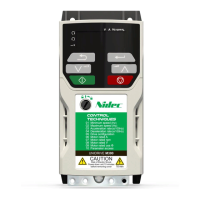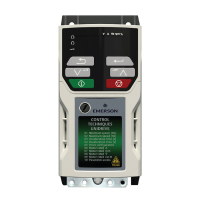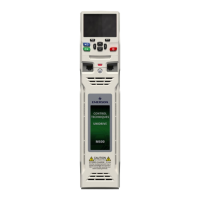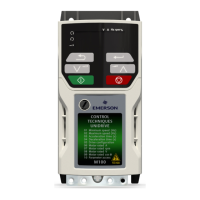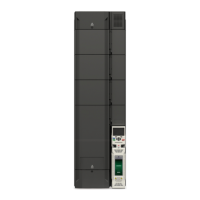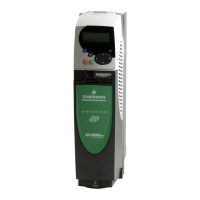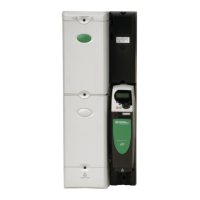Safety
information
Product
information
Mechanical
installation
Electrical
installation
Getting
started
Basic
parameters
Running
the motor
Optimization
NV Media Card
Operation
Onboard
PLC
Advanced
parameters
Technical
data
Diagnostics
UL listing
information
124 Unidrive M702 User Guide
Issue Number: 3
8.1.3 RFC-S mode
Permanent magnet motor with Position feedback
Pr 00.046 {05.007} Rated Current Defines the maximum motor continuous current
The motor rated current parameter must be set to the maximum continuous current of the motor. The motor rated current is used in the following:
• Current limits (see section 8.3 Current limits on page 127, for more information)
• Motor thermal overload protection (see section 8.4 Motor thermal protection on page 127, for more information)
Pr 00.042 {05.011} Number Of Motor Poles Defines the number of motor poles
The number of motor poles parameter defines the number of electrical revolutions in one whole mechanical revolution of the motor. This parameter
must be set correctly for the control algorithms to operate correctly. When Pr 00.042 is set to "Automatic" the number of poles is 6.
Pr 00.040 {05.012} Autotune
There are four autotune tests available in RFC-S mode, a stationary autotune, a rotating autotune, an inertia measurement test and a locked rotor
test to measure load dependent parameters.
• Stationary Autotune
The stationary autotune can be used when the motor is loaded and it is not possible uncouple the load from motor shaft. This test can be used to
measure all the necessary parameters for basic control. During the stationary autotune, a test is performed to locate the flux axis of the motor.
However this test may not be able to calculate such an accurate value for the Position Feedback Phase Angle (03.025) as compared to rotating
autotune. A stationary test is performed to measure Stator Resistance (05.017), Ld (05.024), Voltage Offset At Zero Current (05.058), Maximum
Voltage Offset (05.059), Current At Maximum Voltage Offset (05.060), No Load Lq (05.068) and No Load Phase Offset (05.070). If Enable Stator
Compensation (05.049) = 1 then Stator Base Temperature (05.048) is made equal to Stator Temperature (05.046). The Stator Resistance (05.017)
and the Ld (05.024) are then used to set up Current controller Kp Gain (04.013) and Current Controller Ki Gain (04.014). If sensorless mode is not
selected then Position Feedback Phase Angle (03.025) is set up for the position from the position feedback interface selected with Motor Control
Feedback Select (03.026). To perform a Stationary autotune, set Pr 00.040 to 1, and provide the drive with both an enable signal (on
terminals 11
and 13) and a run signal (on terminal 7 or 8).
• Rotating Autotune
The rotating autotune must be performed on unloaded motor. This test can be used to measure all the necessary parameters for the basic control
and parameters for cancelling the effects of the cogging torque.
During the rotating autotune, Rated Current (05.007) is applied and the motor is rotated by 2 electrical revolutions (i.e. up to 2 mechanical
revolutions) in the required direction. If sensorless mode is not selected then the Position Feedback Phase Angle (03.025) is set-up for the position
from the position feedback interface selected with Motor Control Feedback Select (03.026). A stationary test is then performed to measure Stator
Resistance (05.017), Ld (05.024), Voltage Offset At Zero Current (05.058), Maximum Voltage Offset (05.059), Current At Maximum Voltage Offset
(05.060) and No Load Lq (05.068). Stator Resistance (05.017) and Ld (05.024) are used to set up Current Controller Kp Gain (04.013) and Current
Controller Ki Gain (04.014). This is only done once during the test, and so the user can make further adjustments to the current controller gains if
required. After a delay of 5 s the motor is rotated through a further electrical revolution and Cogging Data Parameter 1 (05.074) to Cogging Data
Parameter 8 (05.081) are measured. To perform a Rotating autotune, set Pr 00.040 to 2, and provide the drive with both an enable signal (on
terminals 11 and 13) and a run signal (on terminal 7 or 8).
• Inertia measurement test
The inertia measurement test can measure the total inertia of the load and the motor. This is used to set the speed loop gains (see Speed loop
gains) and to provide torque feed-forwards when required during acceleration. During the inertia measurement test motor is accelerated with the
currently selected ramps up to a speed of Rated Speed (05.008) / 4, and this speed is maintained at this level for 60 seconds. The Motor And Load
Inertia (03.018) and load compensation parameters (Load Compensation Param 1 (04.031) to Load Compensation Param 4 (04.034)) are
measured. If the required speed is not achieved on the final attempt the test is aborted and an Autotune trip is initiated. To perform an Inertia
measurement autotune, set Pr 00.040 to 3, and provide the drive with both an enable signal (on
terminals 11 and 13) and a run signal (on terminal 7
or 8). Following the completion of an autotune test the drive will go into the inhibit state. The drive must be placed into a controlled disable condition
before the drive can be made to run at the required reference. The drive can be put in to a controlled disable condition by removing the SAFE
TORQUE OFF signal from
terminals 11 and 13, setting the drive Enable Parameter (06.015) to OFF (0) or disabling the drive via the control word
(Pr 06.042 & Pr 06.043).
• Locked rotor test
This test can be used to measure the parameters necessary to operate in sensorless mode at low speeds using signal injection, or to exploit the
torque produced from saliency, provided all the basic control parameters have been set-up correctly. The test can only be carried out if the rotor is
locked is such a way that it will not move even when a torque producing current equal to Rated Current (05.007) is applied to the motor. Rated Load
Lq (05.069), Rated Load Offset (05.071) and Maximum Low Speed Sensorless Mode Current (05.072) are measured. To perform a Rotating
autotune, set Pr 00.040 to 4, and provide the drive with both an enable signal (
terminals 11 and 13) and a run signal (on terminal 7 or 8).

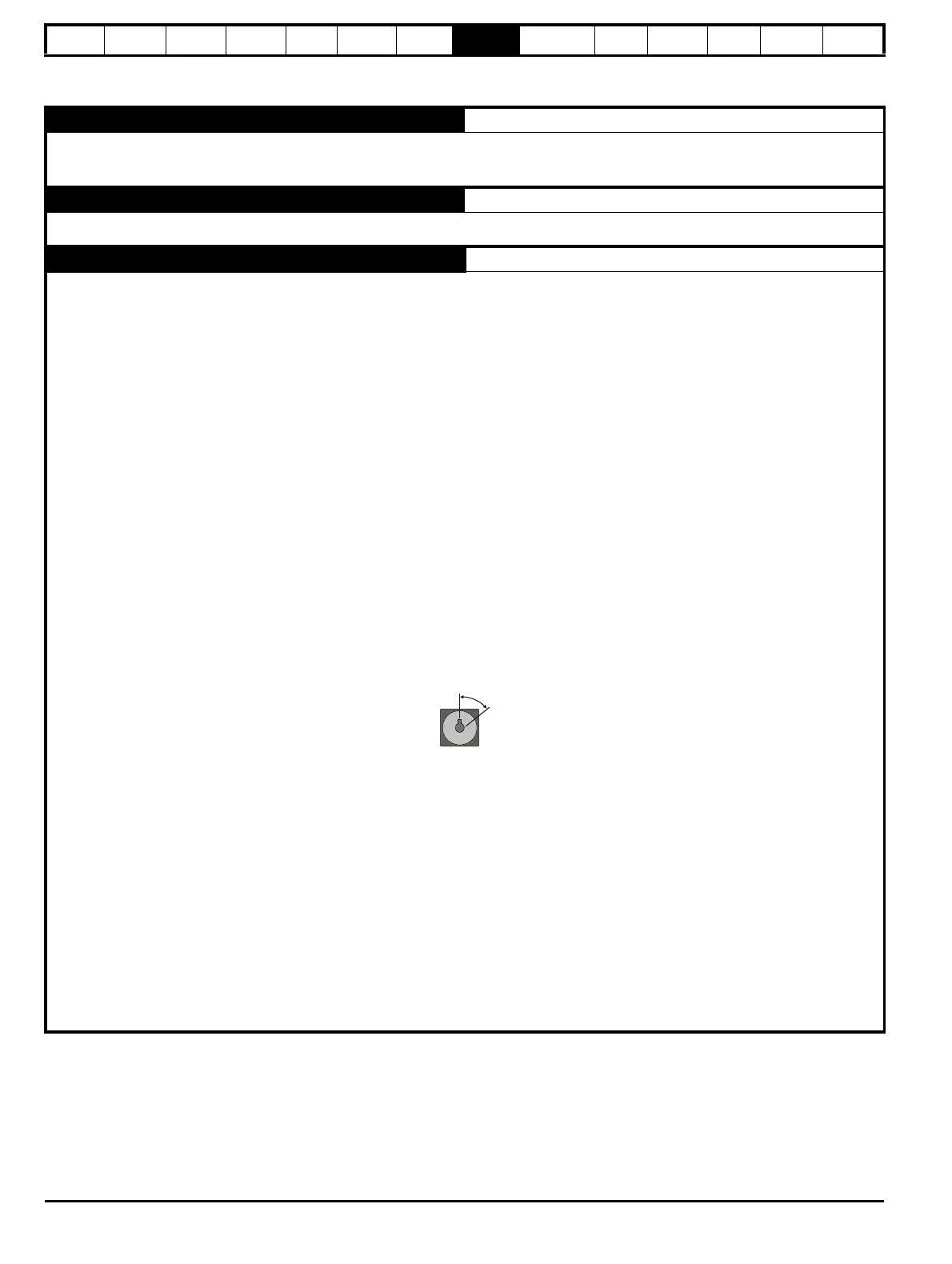